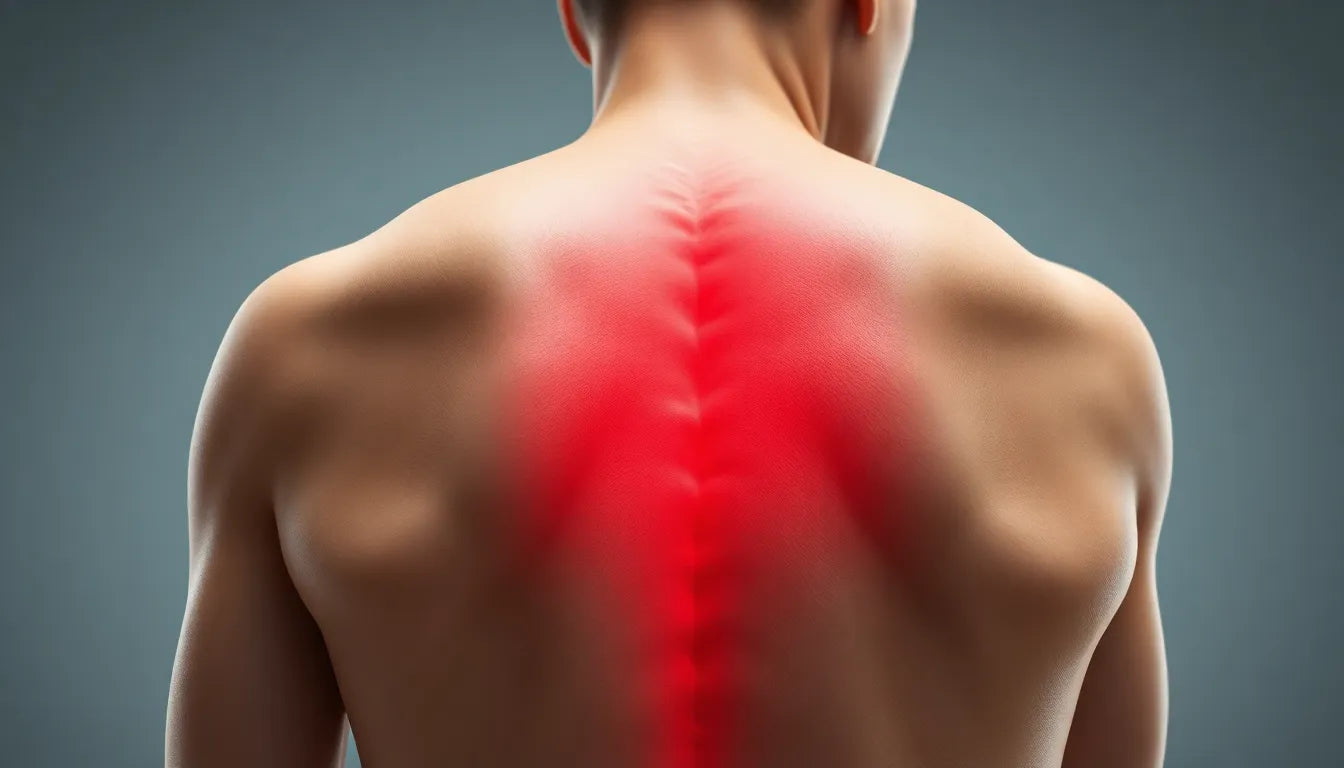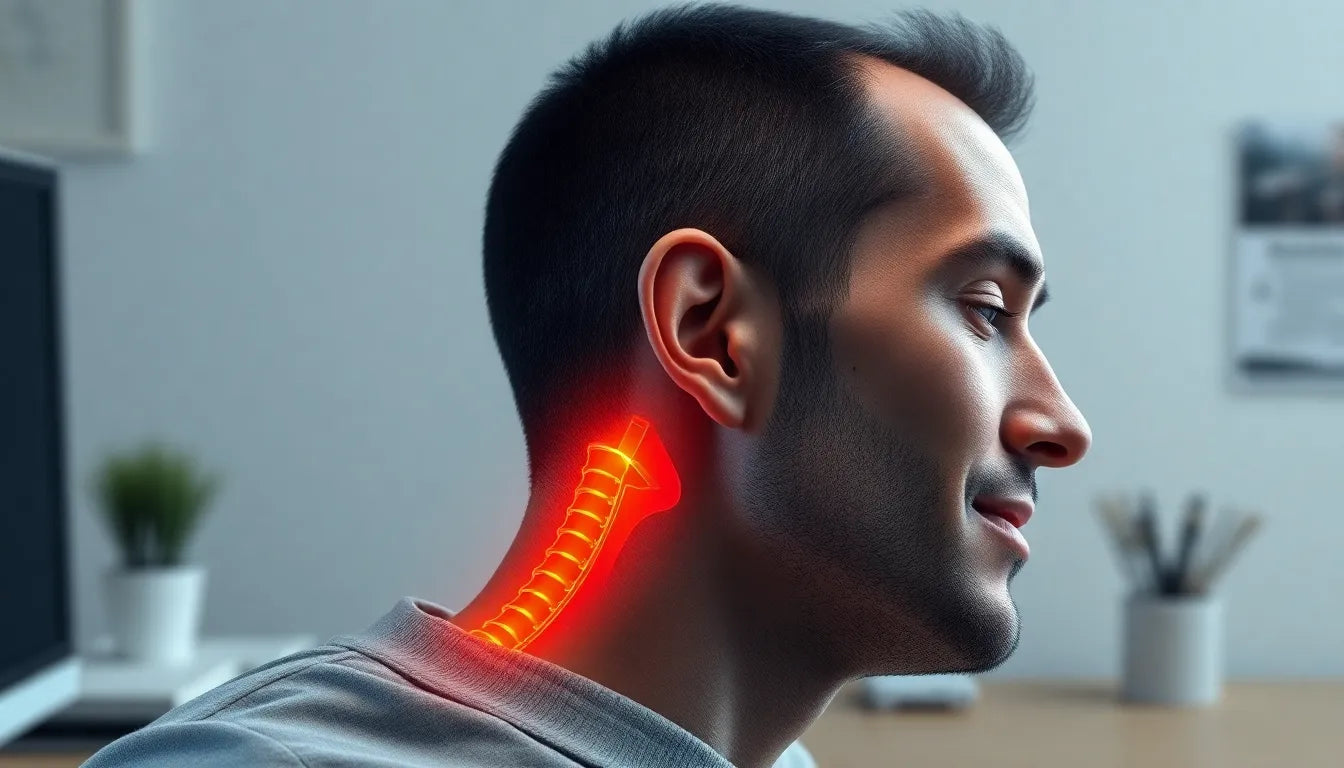Experiencing pain in the lower back that radiates down into the leg is a common issue affecting many individuals. This condition is frequently associated with sciatica, a term used to describe the irritation or compression of the sciatic nerve. The sciatic nerve is the longest nerve in the body, running from the lower back through the hips and buttocks and down each leg. When this nerve is affected, it can lead to a range of uncomfortable symptoms that significantly impact daily life and activities.
Lower back pain that extends down the leg is a widespread problem, with many people experiencing it at some point in their lives. It can be debilitating, affecting everything from sitting and standing to walking and sleeping. The pain can vary in intensity and may be accompanied by sensations such as tingling, numbness, or weakness in the leg. Despite its prevalence, it's important to note that there are effective solutions available to manage and alleviate this discomfort.
Understanding the problem of lower back pain radiating down the leg
The onset of pain in the lower back and leg can often be traced back to specific activities or movements. Common scenarios include heavy lifting, sudden awkward movements, or even prolonged periods of sitting or standing in poor posture. These actions can lead to strain or injury to the muscles and nerves in the lower back, setting the stage for sciatic pain.
Sciatica itself occurs when the sciatic nerve is compressed or irritated. This can happen due to a variety of reasons, with a herniated disc in the lumbar region being one of the most common culprits. A herniated disc occurs when the soft inner material of a spinal disc pushes out through a tear in the tougher exterior, pressing on nearby nerves and causing pain. Other potential causes of sciatic pain include tight gluteal muscles, spinal calcification, inflammation, or, in rare cases, tumors.
Identifying the root cause of this pain is crucial for effective treatment. Understanding whether the pain originates from a herniated disc, muscle strain, or another underlying issue helps in determining the most appropriate course of action. Treatment options can range from conservative approaches like physical therapy and pain management to more advanced interventions if necessary.
While the pain associated with sciatica can be severe, it's reassuring to know that most cases can be managed effectively with the right approach. By addressing the underlying causes and employing targeted treatment strategies, individuals can find relief and regain their quality of life.
Causes of lower back pain radiating down the leg
Understanding the causes of pain in the lower back and leg is essential for effective management and treatment. One of the primary causes is a herniated disc, also known as diskusprolaps. This occurs when the soft inner core of a spinal disc escapes through a tear in the outer layer, pressing on nearby nerve roots. This pressure can lead to significant pain that often radiates down the leg, commonly affecting the sciatic nerve. In addition to herniated discs, other causes include tight gluteal muscles, spinal calcification, inflammation, or, in rare cases, tumors. These conditions can all contribute to the compression or irritation of nerves in the lower back, resulting in pain that extends into the leg.
Several triggering factors can exacerbate these conditions, leading to increased pain. Heavy lifting, poor posture, repetitive strain, and age-related wear and tear are common culprits. These activities can put additional stress on the spine and surrounding muscles, increasing the risk of injury or exacerbating existing issues.
Recognizing the symptoms
Identifying the symptoms associated with lower back pain radiating down the leg is crucial for timely intervention. The pain characteristics can vary but often include sharp, burning, or shooting sensations. In addition to pain, individuals may experience numbness, tingling, or weakness in the leg. These symptoms can significantly impact mobility and quality of life, making it essential to seek appropriate treatment.
The radiation of pain is another key symptom to consider. While some individuals may experience localized pain in the lower back, others may find that the discomfort extends down the leg, sometimes reaching as far as the foot. This radiation pattern is a hallmark of sciatic nerve involvement and often requires targeted treatment to address the underlying cause.
Effective treatment and relief options
Fortunately, there are several effective treatment options available for managing lower back pain that radiates down the leg. Conservative treatments are often the first line of defense and include rest, application of ice or heat, over-the-counter pain relievers, and physical therapy. Physical therapists can design targeted exercises to strengthen the back and improve flexibility, which can alleviate pain and prevent future episodes.
In addition to traditional treatments, alternative therapies such as acupuncture, osteopathy, and massage therapy can provide relief, particularly for those experiencing muscle tension. These therapies can help relax tight muscles and improve circulation, reducing pain and promoting healing.
In more severe cases, advanced interventions may be necessary. These can include prescription medications, steroid injections, or even surgery, especially if there is significant leg weakness or other neurological symptoms. However, it's important to note that most cases of lower back pain with leg radiation improve with conservative treatments, and surgery is typically reserved for cases that do not respond to other interventions.
Trends and insights in treatment approaches
Recent trends in the treatment of lower back pain radiating down the leg highlight a shift towards active rehabilitation over passive rest. This approach emphasizes the importance of staying active and engaging in exercises that strengthen the back and improve flexibility. Early medical consultation is also crucial, particularly for individuals experiencing acute neurological symptoms such as loss of bladder control or significant leg weakness. Prompt evaluation and treatment can prevent further complications and aid in a quicker recovery.
Overall, understanding the causes and symptoms of lower back pain radiating down the leg is essential for effective management. By employing a combination of conservative treatments, alternative therapies, and, when necessary, advanced interventions, individuals can find relief and regain their quality of life.

Lumbar support belt
Provides adjustable compression and support for lower back pain, sciatica, and herniated discs.
Empowering self-help strategies for managing lower back pain
Addressing smerter i lænden og ned i benet involves more than just clinical treatments; empowering self-help strategies can play a crucial role in managing and preventing pain. Implementing simple home exercises and ergonomic adjustments can significantly contribute to alleviating discomfort and enhancing overall well-being.
Home exercises and ergonomics
Engaging in regular home exercises can strengthen the back and improve flexibility, which is essential for reducing pain and preventing future episodes. Exercises such as gentle stretching, yoga, and core strengthening routines are beneficial. For instance, the cat-cow stretch can help maintain spinal flexibility, while planks can strengthen core muscles that support the back.
In addition to exercises, ergonomic adjustments at work and home are vital. Ensure that your workspace is set up to support a healthy posture. Use chairs with proper lumbar support, adjust the height of your computer screen to eye level, and take regular breaks to stand and stretch. These changes can reduce strain on the back and help prevent pain from developing or worsening.

Men's Posture Shirt™ - White
Activates muscles and supports posture, offering relief for neck, shoulder, and back pain.
Lifestyle modifications
Adopting certain lifestyle changes can also be effective in managing smerter i lænden og ned i benet. Maintaining a healthy weight is crucial as excess weight can put additional pressure on the spine and exacerbate pain. Regular physical activity, such as walking or swimming, can help maintain a healthy weight and improve overall fitness.
Practicing good posture is another essential lifestyle modification. Be mindful of your posture when sitting, standing, or lifting objects. Avoid slouching and ensure your body is aligned properly to reduce the risk of injury and strain on the back.
Patient guidance and support
Recognizing symptoms early and seeking professional evaluation is key to managing lower back pain effectively. Patients should be encouraged to identify their symptoms accurately and consult healthcare professionals when necessary. This proactive approach can lead to timely interventions and prevent complications.
Case studies and expert opinions
Insights from healthcare professionals and real-world patient stories can provide valuable perspectives on managing smerter i lænden og ned i benet. For instance, a physiotherapist might emphasize the importance of individualized exercise programs tailored to the patient's specific needs, while a patient might share how lifestyle changes helped them regain mobility and comfort. These narratives can build trust and offer practical advice to readers.
Frequently asked questions
What causes lower back pain that radiates down the leg?
Most commonly, it's due to a herniated disc pressing on the sciatic nerve, leading to discomfort that radiates down the leg.
Can this pain be treated without surgery?
Yes, most cases improve with conservative treatments like physical therapy, pain management, and lifestyle modifications.
When should I see a doctor?
Seek medical attention if you experience severe pain, significant weakness in the leg, or loss of bladder control, as these may indicate a more serious condition.
Are there exercises I can do at home?
Yes, exercises focusing on core strengthening and flexibility, such as yoga and stretching routines, can be beneficial. It's advisable to consult a physiotherapist for a tailored program.
What role does ergonomics play in managing this pain?
Proper ergonomic support can reduce strain on the back, preventing pain and promoting recovery. Adjustments in your workspace and daily habits can make a significant difference.
Kilder
- Kiropraktisk Klinik Fyn. (n.d.). "Smerter i lænden og ned i benet."
- Min Osteopat. (n.d.). "Nerve i klemme i lænden."
- Kiropraktisk Klinik. (n.d.). "Iskias."
- Regionshospitalet Randers. (n.d.). "Ryg smerter øvelser."
- Rigshospitalet. (n.d.). "Bensmerter på grund af diskusprolaps i lænden."
- Sundhed.dk. (n.d.). "Lændesmerter (Lave rygsmerter)."


















